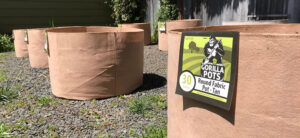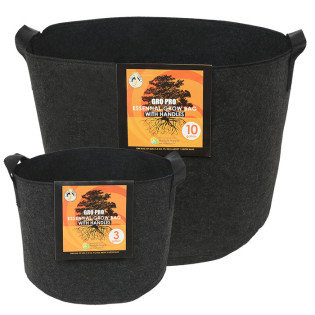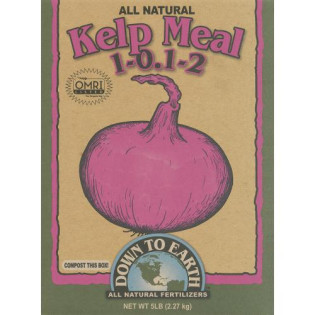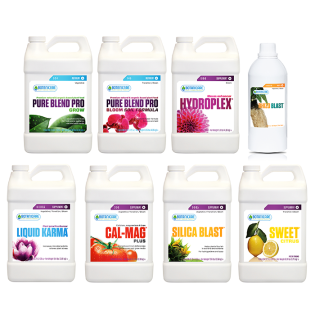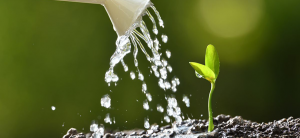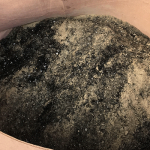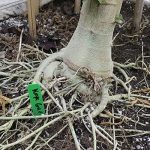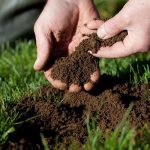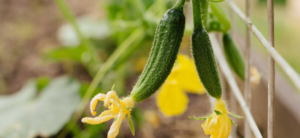
Thinking about starting a garden this year? If so, you might want to consider container gardening.
Container gardens are vastly underutilized by most mainstream gardeners, as they tend to opt for a raised bed. But these present tons of advantages over traditional planting systems.
Not only can a container garden make it easier for you to grow large amounts of plants in a small space, but it can also help you save time and money. This is critical when it comes to watering, fertilizing, weeding, and even pest control.
If you’re interested in getting started, you've come to the right place. Here’s what you need to know.
What Is Container Gardening?
Container gardening is just as simple as it sounds - it’s growing plants in containers! This is something that you can do inside or outside. You can do this with large containers or small containers in just about any corner of the world.
There are plenty of benefits to growing in pots, which we’ll detail below. The biggest advantage is that you can move your garden to wherever it’s most convenient for you.
In fact, this is the major difference between container gardening and other kinds of gardening, like straight in the ground or gardening in a raised bed.
What Are The Benefits Of Container Gardening?
There are multiple benefits of growing in containers, especially when compared to other, more conventional methods of gardening.
For starters, container gardens are incredibly versatile. You can grow in any location, including indoors on a windowsill, on a balcony, or even on a rooftop. If you need to move your plants, it's as simple as picking up the container and moving it!
Of course, you can always build a container garden in the spot where you’d normally put a regular garden, too.
This style of growing will make it possible for you to create a garden with more variety. This is because you can grow plants that might not be suitable to grow in your own soil and sunlight conditions.

Growing in containers is often more accessible since you can put the containers at a height that’s more convenient for you to work.
Container gardens are rarely plagued by weeds like inground gardens. You won’t need any heavy gardening tools or equipment either.
You can change up the look and feel of your container garden at any time. There are usually very few pest or disease problems you’ll have to contend with.
How Do You Start A Container Garden?
You can grow practically any kind of plant, be it a vegetable, fruit, or flower, in a container garden.
However, the best kinds of vegetables to grow will be ones that are suited to growing in small spaces. Some good options to consider, particularly for beginners, include tomatoes, eggplant, peppers, and beans.
Leafy greens and fast-maturing plants, like radishes, tend to work well too. In some cases, you may want to grow a kind of plant that isn’t necessarily well-suited to container growing.
One example is corn. Corn’s tall growth habit means it isn’t always the best for growing in more confined spaces.
However, by choosing varieties of plants that are compact or dwarf (or genetically engineered specifically for container growing), you can easily get around this issue.
Growing In Containers Indoors vs Outdoors
Another major benefit of container gardening? You can grow indoors or grow outdoors!
Deciding which is best for you will depend on your climate and what kinds of plants you wish to grow.
For example, a northern gardener might have more success growing an indoor container garden during the chillier winter months. This is especially the case if he is cultivating warm-weather plants like tomatoes or peppers.
A southern gardener, on the other hand, may wish to grow outside during this same time to maximize the more favorable conditions.
Indoor growing will allow you to exercise more control over your growing conditions. This is because you can put your plants closer to or further away from a light source as needed.
Watering and Drainage
Container-grown plants need to be watered constantly. They dry out much quicker than plants grown in the ground.
There are several ways you can reduce your watering chores. One method is choosing pots that will keep more moisture inside. Those made out of plastic, fiberglass, and glazed clay are much better at holding moisture than terracotta or unglazed clay pots.
During periods of exceptionally hot weather, you will likely need to water your containers often. In fact, you may need to water several times a day.
A larger pot will hold moisture better. The key to successful container gardening and a factor that many people tend to overlook is that you need to have the best soil.

When they’re grown in the ground, plants have endless boundaries for their roots to grow. In a container, conditions are more restricted, so there’s very little room for error.
It’s important that you spend some time filling your containers with high-quality soil before you start gardening. Make sure the soil is fertile and well-draining to help keep the roots of your plants healthy.
You’ll want to use a soil mix that’s formulated specifically for containers. Whatever you do, don’t use dirt that you dug up from the ground outside for your container garden, as it could be contaminated with pests and pathogens.
Remember, drainage is key. Make sure you use containers with drainage holes drilled into the bottom. You can consider making your own if the container you select does not have any.
If you’re building an indoor container garden, you can set your container on plant trays to prevent the water from making a mess of your floors.
Feeding Your Potted Plants Nutrients

Container-grown plants can quickly become deficient in nutrients. If this happens, they will never reach their full potential.
There are several ways you can fertilize your container plants. One option is to choose rich soil that is made specifically for containers. This will work if your plants have low nutritional needs, such as leafy greens.
If your plants are heavier feeders, you need some extra nutrients. You could try adding organic fertilizers like worm castings or bone meal. These can be added at any time throughout the growing season. They can be added directly to the soil and watered in.
Other options include all-purpose fertilizers and liquid nutrients. These will help your plants grow to their full potential.
How often and what strength you apply them will depend on the kind of plant you are growing and in what kind of container.
Do some research into your specific plants, and learn how often to feed nutrients.
What Are The Best Garden Pots For Container Gardening?

Obviously, choosing the right garden pot is an essential component of a successful container garden. Not all garden pots are created equal.
Fortunately, here at Hydrobuilder, we carry the best supply and variety on the market. From traditional plastic pots to the increasingly popular fabric pots, here are the best options:
Plastic Garden Pots
Plastic garden pots are the most tried and true containers to grow in. They're cheap, simple, and get the job done.
But these days, they aren't usually your best option. They don't provide the ideal conditions for plant roots. It's really easy to develop root circles if you don't transplant your plant.
Fabric Garden Pots
The most popular option these days is the fabric pot. They are made from, you guessed it, fabric.
This makes them more breathable than a plastic pot. This helps in allowing oxygen to reach the plant roots more easily. This helps create better root zone conditions and allows for air root pruning, keeping your root mass healthy.
Plus they are lightweight, easy to grow in, and can be washed year after year and reused. This helps you stretch your budget further than ever. If you're looking for a recommendation, you cannot go wrong with Gorilla Pots!
Air Pots
Airpots are a unique, relatively new technology that promotes root pruning to a further degree than even fabric pots.
These containers actually have holes throughout, which allow for ample oxygen to reach the root zone.
This means root pruning, better root growth, better nutrient absorption, etc.
Final Thoughts
A container garden is not without its fair share of work. Fortunately, there are easy steps you can follow to set yourself up for a successful growing season.
From flowers to trees, perennials to vegetables, and even fruits, there are plenty of plants you can grow in a beautiful container garden.
Here at Hydrobuilder, we have everything you need to get your container garden set up right.
From pots and nutrients to complete indoor grow kits, we have it all at the best prices with the best service online. Shop today - and get growing!





